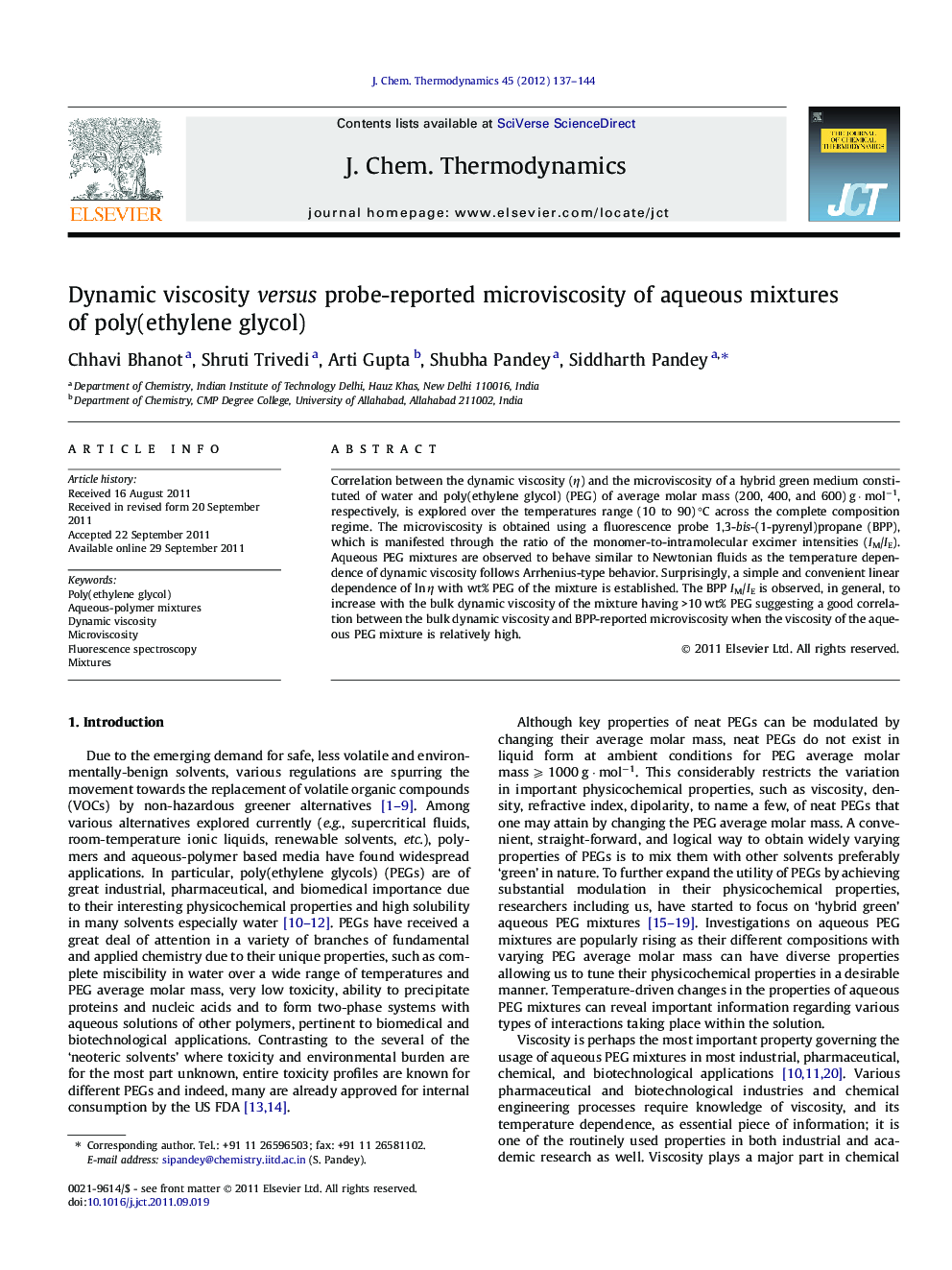| Article ID | Journal | Published Year | Pages | File Type |
|---|---|---|---|---|
| 216299 | The Journal of Chemical Thermodynamics | 2012 | 8 Pages |
Correlation between the dynamic viscosity (η) and the microviscosity of a hybrid green medium constituted of water and poly(ethylene glycol) (PEG) of average molar mass (200, 400, and 600) g · mol−1, respectively, is explored over the temperatures range (10 to 90) °C across the complete composition regime. The microviscosity is obtained using a fluorescence probe 1,3-bis-(1-pyrenyl)propane (BPP), which is manifested through the ratio of the monomer-to-intramolecular excimer intensities (IM/IE). Aqueous PEG mixtures are observed to behave similar to Newtonian fluids as the temperature dependence of dynamic viscosity follows Arrhenius-type behavior. Surprisingly, a simple and convenient linear dependence of ln η with wt% PEG of the mixture is established. The BPP IM/IE is observed, in general, to increase with the bulk dynamic viscosity of the mixture having >10 wt% PEG suggesting a good correlation between the bulk dynamic viscosity and BPP-reported microviscosity when the viscosity of the aqueous PEG mixture is relatively high.
Graphical abstractFigure optionsDownload full-size imageDownload as PowerPoint slideHighlights► Aqueous polymer mixtures, non-toxic media of huge industrial importance, are investigated. ► Bulk viscosity of aqueous. PEG mixtures is shown to vary widely with composition & temperature. ► T-dependent viscosity follows Arrhenius behavior suggesting aqueous PEGs to be Newtonian fluids. ► Microviscosity sensed by a fluorescence ratiometric probe is estimated and correlated with viscosity. ► Microviscosity correlates well with bulk viscosity at higher PEG concentrations.
